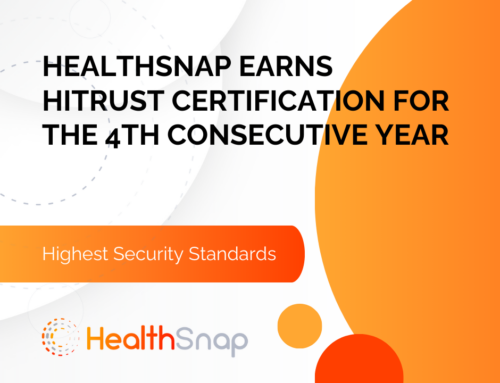Congestive Heart Failure (CHF) is a chronic condition characterized by the heart’s inability to pump blood efficiently. It’s a leading cause of hospitalization and mortality worldwide. As healthcare systems seek innovative approaches to improve CHF management and reduce hospital readmissions, virtual care management has emerged as a valuable tool. This article explores the use case of virtual care management for patients with congestive heart failure, highlighting its benefits, key components, and implementation strategies.
Understanding Congestive Heart Failure
To appreciate the value of virtual care management for CHF, it is important to understand the condition. Congestive heart failure occurs when the heart cannot effectively pump blood, leading to fluid buildup in various parts of the body. Symptoms include shortness of breath, fatigue, swelling, and reduced exercise tolerance. Effective management of CHF requires a multidisciplinary approach involving medication management, lifestyle modifications, monitoring of symptoms, and regular follow-up.
Virtual Care Management Overview
Virtual care management involves leveraging technology to remotely monitor, support, and engage patients in their own healthcare. It encompasses various components, including Remote Patient Monitoring (RPM), telehealth consultations, patient education, medication management, and care coordination. By integrating these elements, virtual care management enables proactive monitoring, timely interventions, and personalized care for patients with congestive heart failure, high blood pressure, coronary heart disease. kidney failure, and chronic obstructive pulmonary disease (COPD), among others.

Benefits of Virtual Care Management for CHF
Early Detection and Intervention
Virtual care management allows for continuous monitoring of patients’ vital signs, such as blood pressure, heart rate, weight, and oxygen saturation. Any significant deviations or heart failure symptoms can be promptly identified, enabling early intervention and preventing acute exacerbations, such as chronic heart failure.
Improved Medication Adherence
By utilizing virtual platforms, healthcare providers can educate patients about their medications, provide reminders for adherence, and address any concerns or side effects. Improved medication adherence leads to better symptom control, more effective chronic disease management, and reduced hospitalizations.
Enhanced Patient Engagement
Virtual care management promotes active patient engagement in self-care. Patients can access educational resources, receive personalized feedback on their health status, and actively participate in their care plan, empowering them to manage their condition more effectively.
Reduced Hospital Readmissions
Through regular monitoring and timely interventions, virtual medical care management helps identify potential issues such as coronary artery disease before they escalate, reducing the likelihood of hospital readmissions. This improves patient outcomes and reduces healthcare costs.
Improved Quality of Life
By providing ongoing support, education, and monitoring, virtual care management helps patients better understand their condition, manage symptoms, and make informed lifestyle choices. This contributes to an improved quality of life for individuals with congestive heart failure, congenital heart disease, advanced heart failure or developing heart failure.
Key Components of Virtual Care Management for CHF
Remote Patient Monitoring (RPM)
RPM involves the use of connected devices to track and transmit patients’ vital signs and symptoms to healthcare providers. This enables continuous monitoring and timely interventions based on real-time data.
Telehealth Consultations
Virtual visits allow patients to consult with healthcare providers remotely, reducing the need for in-person visits. Telehealth consultations provide opportunities for regular follow-ups, medication adjustments, and addressing patient concerns.
Patient Education and Self-Management
Virtual platforms offer educational resources, including videos, articles, and interactive tools, to educate patients about CHF, its management, and lifestyle modifications. Patients can access these materials at their convenience, empowering them to actively participate in self-care.
Medication Management
Virtual care management platforms can incorporate medication reminders, medication reconciliation, and medication adherence tracking. This helps patients adhere to their medication regimen, reducing the risk of medication errors and improving outcomes.
Care Coordination
Effective care coordination is essential in virtual care management for CHF. It involves collaboration between various healthcare providers, including primary care physicians, cardiologists, nurses, and pharmacists, to ensure seamless communication and coordination of care.

Implementation Strategies for Virtual Care Management in CHF
-
Technology Selection: Choose a virtual care platform that aligns with the needs of CHF patients and healthcare providers. Consider factors such as user-friendliness, interoperability with existing systems, security, and scalability.
-
Patient Engagement: Actively engage patients in the virtual care management program by providing clear communication, education, and support. Emphasize the benefits of virtual care and address any concerns or barriers to adoption.
-
Training and Support: Provide comprehensive training to healthcare providers and patients on using the virtual care platform effectively. Offer ongoing technical support and assistance to address any issues that may arise.
-
Integration with Existing Workflows: Ensure that the virtual care management program is seamlessly integrated into existing workflows. Collaborate with healthcare teams to streamline processes and optimize efficiency.
-
Regulatory and Reimbursement Considerations: Stay up to date with regulatory requirements and reimbursement policies related to virtual care management. Familiarize yourself with billing codes, documentation requirements, and coverage guidelines to ensure proper reimbursement for the services provided.
-
Continuous Evaluation and Improvement: Regularly assess the outcomes and effectiveness of the virtual care management program. Collect feedback from patients and healthcare providers to identify areas for improvement and make necessary adjustments.
How Remote Patient Monitoring Works for Patients with Congestive Heart Failure
Remote Patient Monitoring involves the use of digital technologies and connected devices to collect patient data, such as vital signs, symptoms, and medication adherence, from a patient’s home. This data is securely transmitted to healthcare providers for review, allowing them to remotely monitor patients’ health status, detect early warning signs, and intervene when necessary.
Key components of Remote Patient Monitoring for congestive heart failure include:
-
Connected Devices: RPM relies on connected devices that patients use to collect and transmit their health data. These devices may include blood pressure monitors, weight scales, pulse oximeters, and wearable devices that track heart rate and physical activity. These devices are user-friendly and designed to be easily used by patients at home.
-
Data Transmission: The collected health data is transmitted securely to a centralized platform or electronic health record (EHR) system. This may be done efficiently through cellular networks when the patient is using cellular-enabled RPM devices.
-
Data Analytics: The transmitted data is processed and analyzed using sophisticated algorithms. These algorithms can identify trends, patterns, and deviations from normal values, allowing healthcare providers to gain insights into the patient’s health status and make informed decisions.
-
Care Coordination: RPM enables seamless communication and collaboration among healthcare providers involved in the patient’s care. This includes primary care physicians, cardiologists, nurses, and other specialists who can access the patient’s data, review it, and provide appropriate interventions or recommendations.
-
Patient Engagement: RPM encourages active patient engagement in self-care. Patients are empowered to monitor their own health data, track their progress, and adhere to treatment plans. They can also receive educational materials, personalized feedback, and reminders through the RPM system.

Benefits of Remote Patient Monitoring for CHF Management
Early Detection of Decompensation
RPM allows for continuous monitoring of vital signs, symptoms, and fluid status. Any significant changes or worsening of the patient’s condition can be detected in near real-time, enabling timely intervention to prevent hospitalizations or complications.
Improved Medication Adherence
Remote Patient Monitoring systems can include reminders and alerts to ensure patients adhere to their medication regimens. Improved medication adherence leads to better symptom control and reduces the risk of hospitalizations.
Personalized Care and Self-Management
RPM enables personalized care plans based on the individual patient’s data and needs. Patients receive tailored education, feedback, and support to better manage their condition and make informed decisions about their lifestyle choices.

Enhanced Patient Safety
RPM helps identify potential adverse events or complications, such as arrhythmias or fluid overload, before they become critical. Healthcare providers can intervene early to mitigate risks and prevent serious health issues.
Reduced Healthcare Costs
By detecting early warning signs and preventing hospital readmissions, RPM helps reduce healthcare costs associated with managing CHF. It optimizes resource utilization by focusing interventions on patients who need them the most.
Tele-rehabilitation (TR) for Patients with Congestive Heart Failure
Congestive Heart Failure (CHF) requires comprehensive management, including cardiac rehabilitation, to improve patient outcomes. Tele-rehabilitation (TR) has emerged as a promising approach to delivering cardiac rehabilitation services remotely, providing patients with CHF access to structured exercise programs, education, and ongoing support.
Tele-rehabilitation refers to the delivery of rehabilitation services through telecommunication technologies, allowing patients to participate in exercise programs, receive education, and engage in remote monitoring from the comfort of their homes. For patients with CHF, tele-rehabilitation offers a convenient and accessible alternative to traditional in-person cardiac rehabilitation programs.
Key components of tele[rehabilitation for CHF patients include:
Remote Patient Monitoring
Tele-rehabilitation incorporates remote monitoring of patients’ vital signs, exercise performance, symptoms, and medication adherence. This can be achieved through cellular-enabled RPM devices that transmit data to healthcare providers for assessment and adjustment of the rehabilitation program.
Exercise Prescription and Monitoring
Cardiac rehabilitation exercise programs are tailored to the individual patient’s needs and abilities. Tele-rehabilitation platforms provide exercise prescription guidelines, video demonstrations, and progress tracking tools. Patients perform exercises at home while being monitored remotely by healthcare providers.
Education and Self-Management
Tele-rehabilitation programs offer educational resources on CHF management, medication adherence, lifestyle modifications, and symptom recognition. Patients receive personalized education materials and engage in teleconferencing or virtual group sessions to enhance their knowledge and self-management skills.
Behavioral Support and Coaching
Tele-rehabilitation provides ongoing support through teleconferencing, messaging platforms, or telephone calls. Healthcare professionals offer guidance, motivational support, and behavioral coaching to assist patients in adhering to their rehabilitation plans and making positive lifestyle changes.
Care Coordination
Tele-rehabilitation programs involve a multidisciplinary team, including cardiologists, nurses, exercise specialists, and dietitians. These professionals collaborate to provide comprehensive care, share patient data, and coordinate interventions based on the individual patient’s needs.
Benefits of Tele-rehabilitation for CHF Management
-
Increased Accessibility: Tele-rehabilitation overcomes barriers related to distance, transportation, and mobility limitations, allowing patients with CHF to access cardiac rehabilitation services from their own homes. This improves access to care, especially for patients living in remote areas or those with limited mobility.
-
Convenience and Flexibility: Tele-rehabilitation offers flexibility in scheduling exercise sessions, educational modules, and support interactions. Patients can choose the timing and duration of their rehabilitation activities, accommodating their individual preferences and daily routines.
-
Personalized Care: Tele-rehabilitation allows for tailored exercise prescriptions and personalized education materials based on patients’ specific needs and capabilities. Individualized care plans promote optimal rehabilitation outcomes and empower patients to actively participate in their own care.
-
Continuous Monitoring and Feedback: Remote monitoring of vital signs and exercise performance enables healthcare providers to track patients’ progress, detect early warning signs, and provide timely feedback. Regular feedback and support enhance patient motivation, adherence, and overall engagement in the rehabilitation process.
-
Cost-Effectiveness: Tele-rehabilitation has the potential to reduce healthcare costs associated with transportation, facility-based resources, and hospital readmissions. It optimizes resource utilization by focusing interventions on patients who require additional support or adjustment to their rehabilitation plans.

Role of Shared Electronic Patient Records and Teleconferencing in Delivering Care for CHF Patients
Congestive Heart Failure (CHF) requires regular monitoring, proactive management, and collaboration among healthcare providers. Telehealth, incorporating shared electronic patient records and teleconferencing, has emerged as a valuable tool in facilitating communication, care coordination, and remote monitoring for CHF patients.
Shared Electronic Patient Records in Telehealth
Shared Electronic Patient Records play a vital role in telehealth for CHF patients. This digital platform allows healthcare providers to access and share patient information securely and efficiently, ensuring seamless communication and continuity of care. Key aspects include:
Centralized Patient Data: Shared electronic patient records consolidate relevant medical information, including diagnostic reports, medications, allergies, and care plans. Providers can access this comprehensive data in real-time, enhancing decision-making and patient management.
Collaborative Care: Telehealth enables multiple healthcare providers involved in CHF management to access and contribute to the shared electronic patient records. This promotes interdisciplinary collaboration, reduces information gaps, and facilitates coordinated care delivery.
Timely Updates: Providers can update shared patient records with current information, ensuring accuracy and up-to-date insights. This helps healthcare teams make informed decisions, monitor treatment efficacy, and adapt care plans as needed.
Remote Monitoring Integration: Shared electronic patient records can be linked to remote monitoring devices, allowing seamless data integration. Vital signs, symptom assessments, and other health metrics obtained remotely can be automatically recorded in the patient record, facilitating comprehensive monitoring and timely interventions.
Teleconferencing in Telehealth
Teleconferencing, an essential component of telehealth, facilitates virtual communication and consultation between patients and healthcare providers. In the context of CHF management, teleconferencing offers several benefits:
Remote Consultations: Teleconferencing allows patients to have virtual visits with their healthcare providers, reducing the need for in-person visits. This is particularly valuable for individuals with mobility limitations, transportation challenges, or living in remote areas.
Care Coordination: Teleconferencing enables multidisciplinary care teams, including primary care providers, cardiologists, nurses, and other specialists, to discuss patient cases, review shared electronic patient records, and coordinate care plans. This promotes efficient collaboration and streamlined care delivery.
Patient Education and Counseling: Teleconferencing sessions provide an opportunity for healthcare providers to deliver personalized education, counseling, and self-management guidance to CHF patients. They can discuss medication adherence, lifestyle modifications, symptom recognition, and answer patient questions, promoting patient engagement and self-care.
Monitoring and Follow-up: Teleconferencing allows providers to remotely monitor patients’ progress, review symptomatology, and assess treatment response. Regular follow-up visits through teleconferencing facilitate ongoing patient-provider communication, ensuring that patients receive timely support and adjustments to their care plans.
Research Study Shows How Telehealth Supports CHF Patient Management
A study conducted in 2018 aimed to assess the impact of telehealth on mortality and morbidity in patients with congestive heart failure (CHF). The randomized controlled trial compared a group of patients who received telehealth in addition to usual care with a group that received only usual care.

Patients in the telehealth group utilized a tablet connected to devices such as an electrocardiogram, blood pressure monitor, and weight scales. These devices electronically transmitted various data points to their healthcare providers, including body weight, blood pressure, heart rate, heart rhythm analysis, peripheral capillary oxygen saturation (SpO2), and self-rated health status change on a scale from 1 to 5.
Additionally, patients in the telehealth group received CHF patient education and had direct communication with their cardiologists through the telemedical center. A certified nurse conducted monthly telephone interviews with the patients to review symptoms and address any technical issues.
On the other hand, patients in the usual care group followed the current protocol for managing heart failure patients. Both groups of patients had scheduled visits with a cardiologist at the time of screening, for a baseline visit, and for a final visit. They also had follow-up visits with their general practitioners or local cardiologists at 3, 5, and 9 months, allowing for adjustments in treatments when necessary.
The researchers sought to determine whether remote patient monitoring (RPM) had any impact on the length of hospital stays. The findings revealed a reduction in hospital admissions. The percentage of days lost due to cardiovascular hospital admissions or all-cause death was significantly lower in the telehealth group compared to the usual care group.
Specifically, the results related to days lost were as follows:
-
The percentage of days lost due to unplanned cardiovascular hospital admissions and all-cause death was 4.88% in the telehealth group and 6.64% in the usual care group.
-
Patients in the telehealth group experienced an average loss of 17.8 days per year, while patients in the usual care group lost 24.2 days per year.
-
Regarding days lost specifically due to worsening heart failure, patients in the telehealth group experienced an average loss of 3.5 days per year, while patients in the usual care group lost an average of 5.6 days per year.
Although there was no statistical difference in cardiovascular mortality between the two groups, the all-cause death rate showed a significant difference. The all-cause death rate was 7.9% per 100 person-years of follow-up in the telehealth group and 11.34% per 100 person-years of follow-up in the usual care group.
An interesting observation from the study was that the results were consistent regardless of the geographical location of the patients, whether they resided in rural or metropolitan areas. This finding highlights the potential of CHF telehealth in providing equitable healthcare access for patients, irrespective of their location.
Choose HealthSnap’s All-in-One Integrated Virtual Care Management Platform for CHF Management
Telehealth has emerged as a valuable approach for managing CHF, offering numerous benefits such as early detection, improved medication adherence, enhanced patient engagement, reduced hospital readmissions, and an improved quality of life.
HealthSnap provides innovative virtual care management services to healthcare organizations, helping them to improve patient outcomes and transform the management of chronic conditions like congestive heart failure (CHF).
With HealthSnap’s Remote Patient Monitoring (RPM) and Chronic Care Management (CCM) virtual care management solutions, healthcare providers can improve the quality of patient care and build more trusted patient-caregiver relationships, while lowering their administrative time and costs.
To schedule a demo or consultation, call today at 888-780-1872 (Ext. 3) or click here to schedule a meeting.






